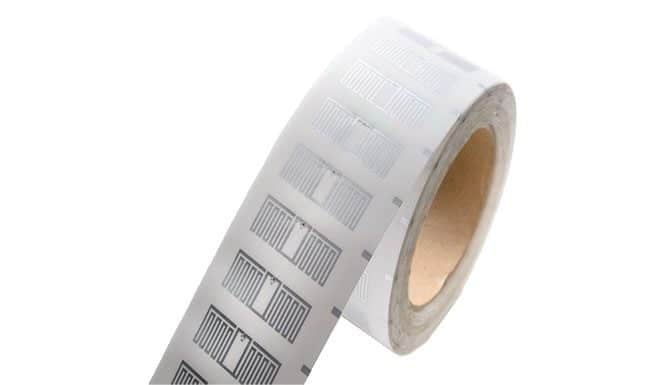To simply answer the question posed in the title—yes, there are printers out there that support both barcodes and RFID—but don’t leave just yet!
Wondering what benefits are associated with combining RFID with your in-house barcode strategy, or, which printers are capable of both printing and encoding? Then you might want to stick around.
Why use RFID enhanced barcode labels?
There are a number of ways RFID can benefit processes in both healthcare and industrial manufacturing environments—the condensed version is that RFID provides faster more user friendly scanning and better aligns with the future of identification technology. So why combine your RFID strategy with barcodes?
Efficiency
One of the things RFID is best known for is its ability to increase the efficiency of scanning processes. In comparison to barcodes RFID can be read faster, from a greater distance and with increased consistency. Instead of bringing the reader up to individual labels and ensuring it’s being held at a proper angle, an RFID reader can be brought near a group of items and pick up their information. This process might require a couple of passes depending on the way the items are organized, but typically allows for a significant increase in speed.
There are still going to be areas in your processes where a barcode will be most efficient—maybe an employee is working very closely with an item, or somewhere along your chain of custody access to RFID readers won’t be provided. No matter the situation, including both RFID and barcodes in your labeling strategy allows the user to choose the most efficient scan method for the task at hand.
Compatibility with automation
The way RFID tags are read is not only more convenient for the reading of objects by hand, but is well suited for automated lines and equipment. This is essentially for the same reason we mentioned previously—the distance and angle at which the tag interacts with the reader doesn’t have much of an impact on readability so long as the two are within read range.
This means a reader on a fixed arm can be placed alongside a conveyer line or within an automated device and be able to pick up scans even if the label isn’t in clear view of the reader preventing interruptions to your processes caused by no-reads.
So it’s possible you may want to use RFID for the automated portions of your processes, but when employees are in close contact with product it may still be equally efficient to utilize a barcode.
A built in back-up plan
Barcodes serve as a good back-up scanning technology—just in case your RFID tags end up in a situation where they become unreadable—whether that be due to interference or RFID readers are unavailable somewhere along the chain of custody.
RFID can do more than a barcode
Additionally, the barcode might be utilized to hold only part of the information. Barcodes are generally unable to hold as much information as RFID tags, and the information stored in them remains the same through the life of the barcode. Pertinent identification information that will remain relevant throughout the life of your product can be stored in the barcode—while in the tag, that information can be stored alongside changing data such as remaining life, tracking information etc.
Which barcode printers can support RFID?
As RFID increases in popularity, more and more barcode label printers are being introduced with encoding abilities—let’s take a look at a few we commonly recommend due to their abilities to accommodate a range of needs and perform to a high standard:
Zebra ZT series
Zebra’s ZT Series is a range of medium-high powered industrial printers—suitable for medium to extremely high volume jobs depending on the model you choose. Both the 400 and 600 models of Zebra’s ZT series are available with an RFID encoding option—in addition to being user friendly and suitable for a broad range of applications.
Zebra ZD500R
Another RFID enabled option from Zebra is the ZD500R from the ZD series. Like the other printers in the ZD series the 500R is a compact desktop model suitable for low-medium volume jobs.
The size, price and volume capabilities of this model make it a great fit for smaller facilities where real estate and budget may be limited, and throughput volumes don’t justify the use of a higher performance industrial type printer.
Sato CL4NX
Satio’s CL4NX is similar to the ZT Series in it’s volume capacity and array of application, but offers a few additional features. The CL4NX includes a scan and verify feature to ensure viable barcodes and image resolution options up to 600 DPI. The CL4NX also features an aluminum outer casing making it a worthy option for harsher environments in addition to a broad variety of other applications.
As we move towards a more connected future, RFID is a valuable tool to help your facility prepare while also improving accuracy and efficiency in your labeling strategy. We recommend combining your RFID strategy with a barcoding strategy for a variety of reasons, but most importantly to add a back-up plan in case read issues occur, or partnering facilities are unable to accommodate RFID.
A range of options are available to help you obtain a smarter labeling solution—so take a moment to check them out and feel free to contact us if you have any questions about them.
